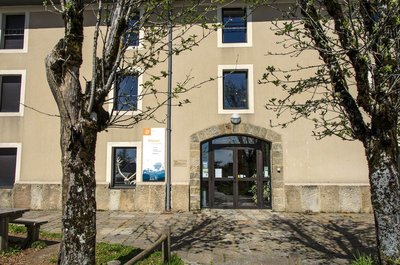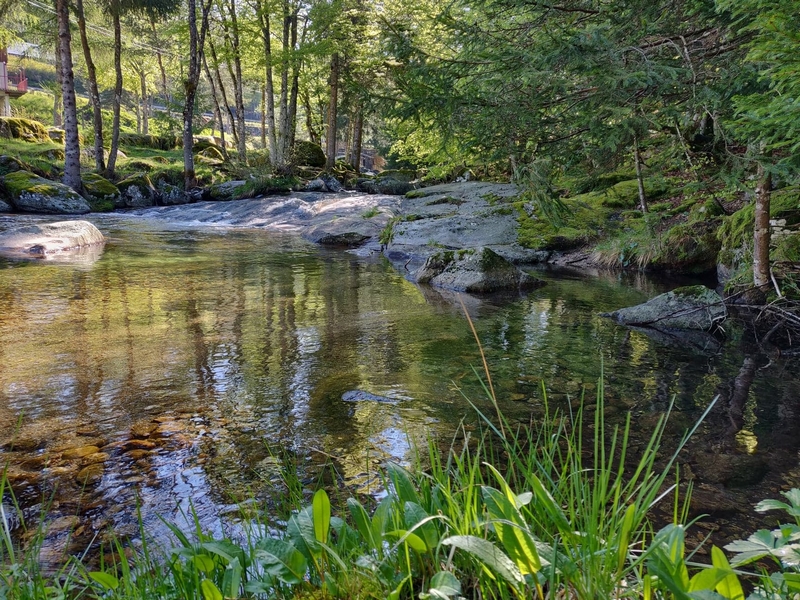
MTB 15 - The Aigoual forest– graded red
8 points of interest
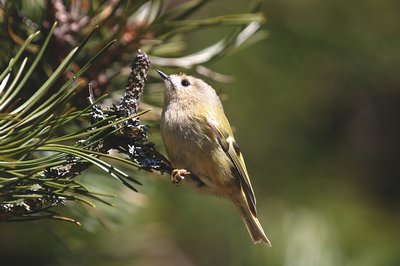
Roitelet huppé - Bruno.Descaves  Fauna
FaunaThe goldcrest
As you walk through the woods, you may hear the shy zee zee of the goldcrest, which depends on conifers. But do you know where its name comes from?
Its Latin name is Regulus regulus, the little king. In Celtic tradition, the smallest bird is the druid of the avian world. In first-century local Celtic languages, the same word was used for ‘druid’ and ‘goldcrest’.
Another reason for this royal title is that the goldcrest, when in love, raises the black-rimmed golden feathers on his head, like a little crown.
Sous bois du Trévezel - Béatrice Galzin  Natural environment
Natural environmentThe Mont Aigoual forest
“Aigoual, Forêt d’Exception”
The French Forestry Office, which manages state forests, launched a programme in 2013 called “Aigoual, Forêt d’Exception” (Aigoual: An Exceptional Forest) with the aim of highlighting the massif’s natural and cultural heritage. The Forestry Office thus tries to foreground the different aspects of its multi-facetted management: production, protection and receiving visitors. One key aspect of this approach, which complements other initiatives by local actors, is to improve visitors’ experience in the forest.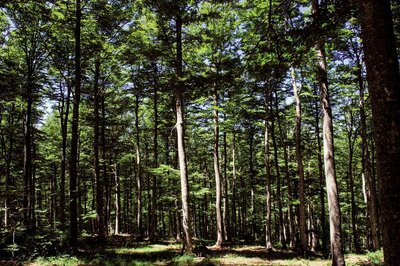
Hêtraie vers Camprieu, Aigoual - © Olivier Prohin  Natural environment
Natural environmentThe Aigoual forest
In the 19th century, Mont Aigoual was almost totally bare of trees. Intensive use of the forest and the pressure of transhumant grazing together with the harsh local climate caused devastating floods. The rich vegetation of the grazing grounds was replaced by heather pastures and many gullies. In the valleys huddling at the foot of Mont Aigoual, terrible floods pushing tons of stones downstream carried off roads and pastureland. In response, a reforestation programme was launched in the second half of the 19th century, which created the forest you see today. Nowadays, the forested Aigoual massif protects the valleys while at the same time providing a space for economic production, biodiversity and leisure.

 Natural environment
Natural environmentIrregular forest
This tree population consists of trees of very different diameters, ages and heights. Species are mixed: mainly pine, but also beech, rowan and whitebeam. This is an irregular mature forest, a forestry dynamic that is interesting for several reasons: it creates permanent forest cover; resistance to soil erosion; better resilience against storms or parasite attacks; regular production, etc. In the small clearing to the left of the path, the sunlight now penetrating to the forest floor has made natural regeneration of beech and fir possible, ensuring the renewal of the forest.

 Know-how
Know-howProductive forest
Marker 2
Another method of creating a durable forest cover is to plant or sow. This work is carried out either on bare soil or among existing tree stands. The Aigoual reforestation programme was a gigantic effort, requiring 900,000 days of work, the planting of 60 million conifers and 7 million deciduous trees, and sowing of 38 tonnes of seeds. Spruces and pines, which can be planted in full sunlight and grow quite quickly, were widely used. Under the forest canopy, preference was given to firs.
 History
HistoryFrom beech copse to mature plantation
Marker 1
Around 1850, before reforestation began, the inhabitants of the Cevennes were using local wood resources on a massive scale for heating and in industry, especially spinning-mills. Gradually, only a few beech copses remained, which were cut every 25 to 40 years. Grazing by tens of thousands of sheep further reduced the herbaceous plant cover. Much weakened, the plant cover was then also subjected to heavy precipitation, the so-called Cevenol episodes. It is against this backdrop that the lengthy work of the foresters began. To reduce risks and establish a lasting forest cover, the first technique was to make use of what was already present by converting the disused copses into mature plantations.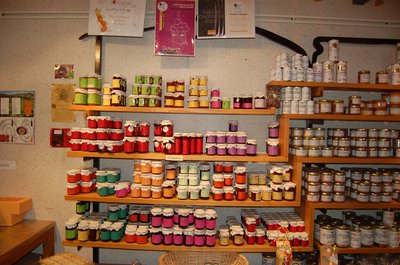
Boutique des producteurs - © Nathalie Thomas AgricultureThe association "Terres d'Aigoual"
The Cévennes National Park rents out part of the building to the association, enabling local farmers to sell their products directly to the public. The association brings together farmers who wish to promote what they produce and share their know-how. They also enjoy sharing their vision of farming- high quality produce and products,
- human-sized farms,
- mutual aid.
Come and discover their products!

Maison forestière de la Serreyrède - © Jacques de Joly AgricultureLa Serreyrède
Before 1861, the house at the Col de la Serreyrède was inhabited by two families of farmers. They owned some livestock and had a vegetable garden, whose terraces you can still see above the La Caumette track. From 1861 on, the farm was inhabited by a forest ranger. It was only bought by the state body Eaux et Forêts in 1883, to be turned into a forester's house. It became one of Georges Fabre's headquarters during the reforestation of the Aigoual massif. The Cévennes National Park, tourism office and Terres d'Aigoual growers have now joined forces to revive La Serreyrède with the help of the Communauté de Communes Causses Aigoual Cévennes – Terres solidaires.
Description
Starting from "Station de Prat Peyrot", head to "Col de la Serreyrède" via "Le Fangas".
1) At the pass (col), go downhill on the right on a road after the Maison de l'Aigoual for several metres and then turn right, towards "Plan du Châtaignier" via "Sous St Flour".
2) At “Plan du Châtaignier” turn right after the car park towards "Le plan d'eau", and continue on the road towards "Route du Devois", "Le Cros".
3) Head towards “Maison du bois” via "Tabarde", then follow “Tailladette”, "Taillade", "Bois de l'Agre" to reach "Le Col de Faubel".
4) At “Le Col de Faubel”, cross the road, take the track towards "La Pépinière" and turn right towards "Col de l'Espérou" via "Montlau".
5) At "Col de l’Espérou", head towards "Col de la Serreyrède" via "Le Trevezel".
6) At “Col de la Serreyrède”, go back up to “Station de Prat Peyrot” via “Le Fangas” on the old drovers’ road.
This circuit is taken from the guidebook Massif de l’Aigoual, published by the communauté de communes Causses Aigoual Cévennes as part of the collection Espaces naturels gardois and the label Gard Pleine Nature.
.
- Departure : Prat Peyrot
- Arrival : Prat Peyrot
- Towns crossed : Meyrueis, Val-d'Aigoual, Saint-Sauveur-Camprieu, and Dourbies
Forecast
Altimetric profile
Recommandations
Caution: patous (livestock guard dogs) on the summit of mont Aigoual! Seek advice on how to behave near these dogs from tourist offices and National Park information centres.
Information desks
Tourism & national parc'house
Col de la Serreyrède, 30570 Val d'Aigoual
The Maison de l'Aigoual houses the tourism office Mont Aigoual Causses Cévennes and the Maison du Parc national. This visitor centre provides information on and raises awareness of the Cévennes National Park, its sites and events as well as the rules that must be observed in the National Park's central zone.
On site: changing exhibitions, video projections, Festival Nature events and shop Open year-round
Transport
Access and parking
Parking :
Calculateur d'itinéraire Lio
Utilisez le calculateur liO pour organiser votre trajet en région Occitanie.
Autres régions
Calculez votre itinéraire en Auvergne Rhône Alpes sur Oùra
Biodiversité autour de l'itinéraire
Source

Report a problem or an error
If you have found an error on this page or if you have noticed any problems during your hike, please report them to us here:



